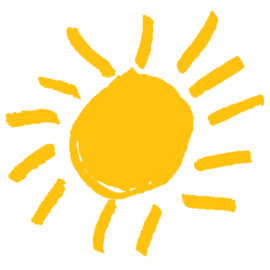Blog

Young Audiences’ Free Summer Arts & Learning Academy to Expand to Nearly 2,600 Children After Study Shows it Reduces Summer Learning Loss
Arts-integrated program for City Schools students expanding to nine sites in 2020 after program successfully reduced summer learning loss in math
BALTIMORE – Young Audiences’ Summer Arts & Learning Academy–the free, five-week arts integration program for Baltimore City Public School students–will expand in 2020 after new research showed the program successfully reduces summer learning loss in math while supporting writing and social-emotional growth. In 2020, the program will grow to nine sites, reaching nearly 2600 students across Baltimore.
The 2019 Summer Arts & Learning Academy (SALA) was held from July 6 to August 7 at eight sites. Through hands-on activities co-taught by teaching artists and teachers, more than 2,300 Pre K-5th grade students engaged in painting, songwriting, poetry, dance, music, photography, and playwriting while learning math, writing, and literacy.
“Arts education is a vital component of instruction in City Schools because its concepts infuse other key instructional areas such as language arts and mathematics. That combination creates a well-rounded education for our students,” said Dr. Sonja Brookins Santelises, CEO of City Schools. “We are pleased to partner with Young Audiences/Arts for Learning as it enhances its contribution to the arts education of our students. Its work is invaluable in expanding the minds and skillsets of our students.”
Research from Baltimore City Public Schools and evaluation firm WolfBrown showed that the infusion of the arts into traditional learning content transformed the classroom experience, resulting in academic gains for students. Baltimore City Public Schools analyzes student performance on the i-Ready math assessment, taken at the end and beginning of each school year to gauge summer learning loss. Results showed that SALA attendees had significantly less summer learning loss in i-Ready math compared to BCPSS students who did not attend the program. The district evaluation also highlighted YA as the most cost-efficient elementary program with the highest rates of enrollment and attendance.
WolfBrown, a national leader in research on arts education and children’s development, partnered with Young Audiences to analyze the 2019 SALA results and reported significant academic gains–an average of 20% growth–in third-fifth grade writing scores on pre-and-post program testing. WolfBrown also found that students attending SALA for two years showed no summer learning loss in math. Rather, these students experienced academic gains when returning to school, growing their i-Ready scores by nearly three percentile ranks.
WolfBrown’s findings showed that while all kids can benefit from the program, students who are furthest behind academically can benefit the most. Students (grades 3-5) entering the program two grade levels below grade level saw no summer learning loss in reading as measured by i-Ready. In fact, these students grew by two percentile ranks when returning to school in the Fall.
With Baltimore City Public Schools prioritizing whole child education, Young Audiences (YA) partnered with WolfBrown to develop and pilot an observation tool last summer that spans from emotional support and social climate to academic knowledge and arts integration. The framework is based on what research shows matters in a learning environment–and it may ultimately help YA and City Schools better understand why this program works. Observers scored SALA particularly high in classroom climate, teacher sensitivity, ability to develop math skills in students, co-teaching, and differentiated literacy instruction.
“Arts education is a vital component of instruction in City Schools because its concepts infuse other key instructional areas such as language arts and mathematics. That combination creates a well-rounded education for our students,” said Dr. Sonja Brookins Santelises, CEO of City Schools. “We are pleased to partner with Young Audiences/Arts for Learning as it enhances its contribution to the arts education of our students. Its work is invaluable in expanding the minds and skillsets of our students.”
“We are thrilled that City Schools is choosing to partner with Young Audiences to expand this program to more children in summer 2020,” said Stacie Sanders Evans, Young Audiences President & CEO. “We also love that City Schools is committed to the whole child, making sure kids have opportunities to develop personally, creatively, and academically over the summer.”
Registration for the 2020 Summer Arts & Learning Academy will open on Tuesday, March 3, with the program running from July 6 to August 7. Host sites include Arundel Elementary Middle School, Elmer A. Henderson-Hopkins, Dorothy I. Height Elementary School, Gardenville Elementary School, Beechfield Elementary Middle School, James McHenry Elementary School, Pimlico Elementary/Middle School, Wildwood Elementary/Middle School, and Graceland Park-O’Donnell Heights Elementary School. Find registration and more information at yamd.org/programs/summer-arts-academy.
View the full Baltimore City Public Schools Summer Evaluation
View the full WolfBrown SALA Evaluation

About Young Audiences/Arts for Learning:
Started in Baltimore in 1950, Young Audiences is the nation’s largest arts-in-education provider. As the Maryland affiliate, Young Audiences/Arts for Learning (YA) is devoted to enriching the lives and education of Maryland’s youth through educational and culturally diverse arts programs. Through Young Audiences, professional artists from all disciplines partner with leaders and schools for nearly 10,000 hands-on arts learning experiences that reach more than 190,000 Maryland students. Young Audiences envisions a Maryland where the arts are valued for their capacity to transform lives, and where every student is immersed in opportunities to imagine, to create, and to realize their full potential.








